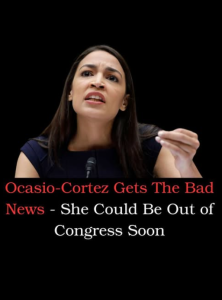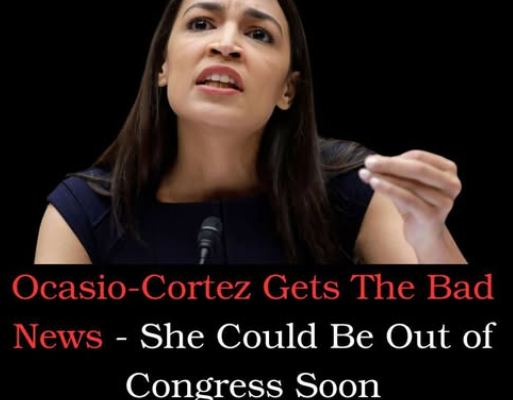The Unexpected Shift: Gen Z’s Conservative Turn Amid Democratic Party Turmoil
For years, political analysts and party strategists confidently predicted that Generation Z—those born between the late 1990s and early 2010s—would be the most progressive voting bloc in American history. Raised on social media, shaped by movements for racial justice, climate action, and gender equity, Gen Z was expected to carry the Democratic Party into a new era of dominance. But in a stunning reversal, recent data reveals a growing conservative trend among Gen Z voters, particularly young men, challenging long-held assumptions and reshaping the political landscape.
This shift is not just a statistical anomaly—it’s a cultural reckoning.
A Surprising Surge in Conservative Support
According to AtlasIntel polling, President Donald Trump’s approval rating among 18–29-year-olds climbed to 52.7% in February 2025, a dramatic increase from previous years. In the 2024 presidential election, Trump won 47% of the Gen Z vote, up from 36% in 2020. Democratic pollster David Shor described the trend as “the most shocking” development in youth politics over the past four years.
Shor’s analysis revealed that Trump not only won among young white men but also made significant gains among nonwhite men in the youngest voting demographic. The gender gap was stark: young men under 30 leaned heavily conservative, while young women remained more progressive. This 23-point gender divide is unprecedented and signals a deepening polarization within Gen Z itself.
Two Gen Zs: A Generational Split Within a Generation
Rachel Janfaza, a journalist specializing in youth political culture, describes the phenomenon as a divide between “Gen Z 1.0” and “Gen Z 2.0”. The older segment of Gen Z—those aged 22 to 29—came of age during Trump’s first term and the rise of progressive activism. They were shaped by the resistance movements of 2016–2020 and tend to support Democratic policies.
In contrast, younger Gen Zers—ages 18 to 21—graduated high school during or after the COVID-19 pandemic. Their formative years were marked by isolation, economic uncertainty, and a digital landscape dominated by TikTok and YouTube, where conservative influencers have gained significant traction. According to Yale’s Youth Poll, this younger cohort supports Republicans by nearly 12 points, while their older counterparts favor Democrats by about 6 points.
This internal generational split is reshaping how campaigns target youth voters. It’s no longer enough to appeal to Gen Z as a monolith—nuance is essential.
Why the Shift?
Several factors contribute to Gen Z’s conservative drift:
- Disillusionment with Democratic Leadership: Many young voters feel let down by the Democratic Party’s inability to deliver on key promises. From stalled climate legislation to rising student debt and housing costs, frustration is mounting. The party’s internal divisions and perceived elitism have alienated some voters who once leaned left.
- Cultural Backlash: A segment of Gen Z, particularly young men, is reacting against what they perceive as “woke overreach.” Issues like transgender athletes in sports, DEI initiatives, and cancel culture have become flashpoints. These voters are drawn to conservative messaging that emphasizes individualism, free speech, and traditional values.
- Digital Influence: Conservative voices have mastered short-form content on platforms like TikTok, Instagram Reels, and YouTube Shorts. Influencers such as Ben Shapiro, Jordan Peterson, and Charlie Kirk have built massive followings among young men, offering critiques of progressive ideology in digestible, provocative formats.
- Economic Anxiety: Gen Z faces a precarious economic future. Many entered the workforce during or after the pandemic, confronting inflation, job instability, and unaffordable housing. Conservative economic messaging—focused on deregulation, entrepreneurship, and tax relief—resonates with those seeking financial independence.
Democratic Party at a Crossroads
The Democratic Party is grappling with internal challenges that compound its struggle to retain Gen Z support:
- Leadership Fatigue: With aging leaders at the helm and few fresh faces rising to prominence, the party risks appearing out of touch. The 2024 loss to Trump, despite high youth turnout, has triggered soul-searching among strategists.
- Messaging Gaps: Democrats have struggled to communicate effectively on platforms where Gen Z spends most of its time. Long-form policy discussions and traditional campaign ads don’t compete with viral videos and meme culture.
- Policy Paralysis: Despite controlling the Senate and White House for part of the last decade, Democrats failed to pass sweeping reforms on climate, healthcare, and education. This perceived inaction has eroded trust among younger voters.
What This Means for 2026 and Beyond
The conservative shift among Gen Z could have profound implications for upcoming elections. If the trend continues, Republicans may gain a durable advantage among young voters—a demographic once considered reliably liberal.
Campaigns will need to rethink their strategies. Democrats must reconnect with Gen Z by addressing economic concerns, embracing digital-native communication, and elevating younger voices within the party. Republicans, meanwhile, will likely double down on cultural messaging and influencer partnerships to solidify their gains.
The partisan divide within Gen Z also suggests that future political discourse will be more fragmented. Issues like gender, race, and identity will continue to polarize, but economic and institutional trust may become unifying concerns across ideological lines.
Final Reflections: A Generation in Flux
Gen Z is not a static entity—it’s evolving. The conservative trend is not universal, nor is it permanent. It reflects a moment in time shaped by global upheaval, digital transformation, and political disillusionment.
But it also reveals something deeper: Gen Z is searching. For meaning, for stability, for leaders who listen. Whether they find it on the left or the right will depend not just on policy, but on empathy, authenticity, and the ability to speak their language.


